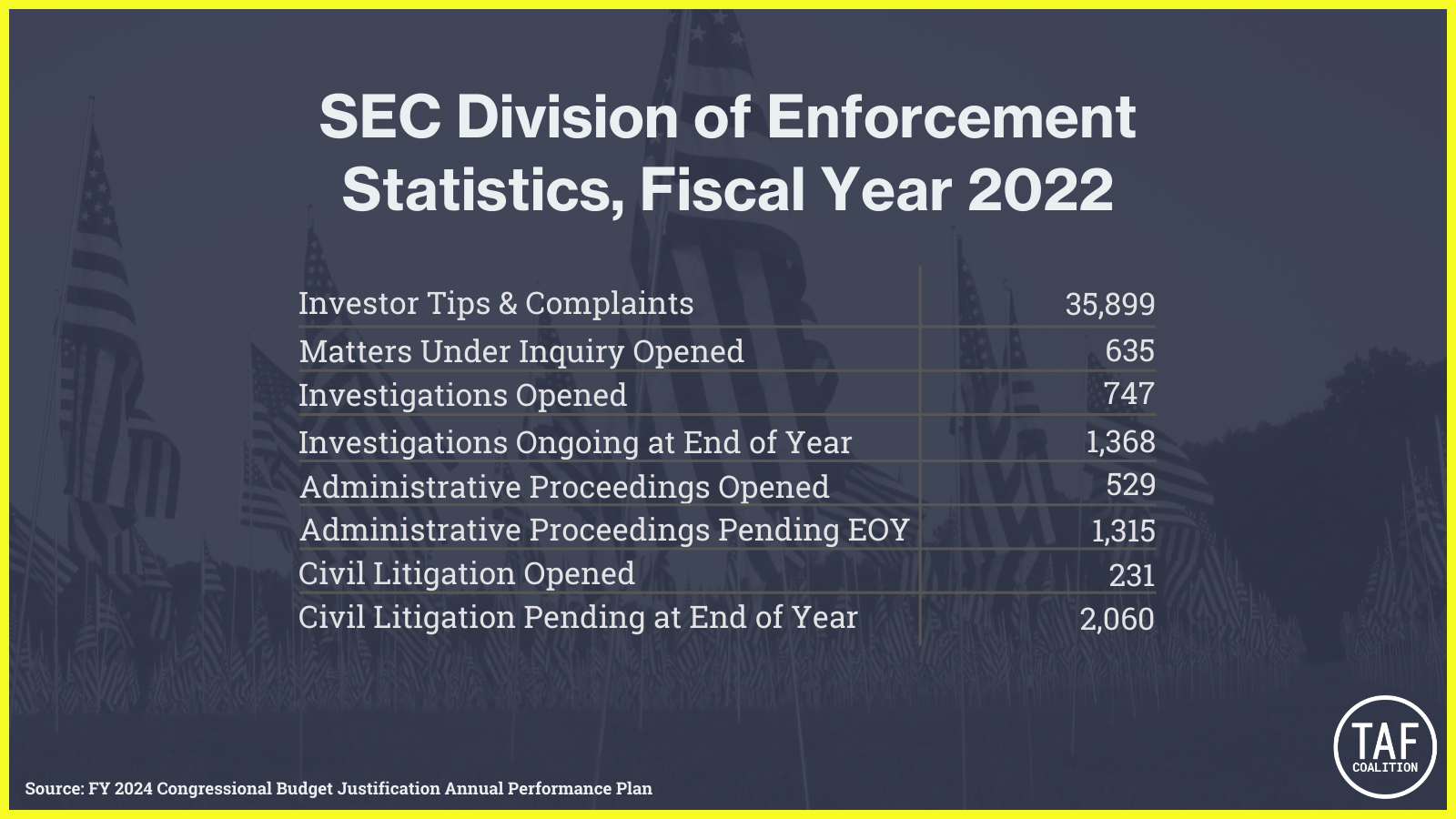The SEC has a big job to do, let’s see if they have the people to do it.
The SEC says fighting fraud is its number one strategic goal in the Commission’s FY 24 Congressional Budget Justification and FY 22 Performance, Report, page 7.
We try to examine if their resources match the mission.
Despite the progress made by the SEC Whistleblower Program and efforts by the Commission in general, not nearly as many cases come to action as are initially reported.
Here’s what the SEC said its Division of Enforcement was working on as of FY 22. Report page 19:

Yes, there are almost as many seats in a small major league Baseball Stadium[1]as there are Disclosures on file with the SEC, and they opened 231 new civil litigation cases this year.
We’d ask the SEC what the difference is between an “inquiry opened” and an “investigation opened,” but either way that shows an investigation of something.
More significantly the SEC had 2,060 pending civil cases as of FY 2022, which involve some overlap with the administrative proceedings. We note those pending cases can relate to a disclosure from any previous year that is ongoing. Two thousand cases is something, so let’s look at how this measures up to the overall mission of the SEC and their resources to fulfill that mission.
The SEC is not shy about saying how big its mission is, providing the kind of mind-bending numbers nobody can comprehend:
Our $100 trillion capital markets touch most Americans’ lives, whether they’re saving for the future, borrowing for a mortgage, taking out an auto loan, or working for a company that raises money to fund growth or innovation. Our markets are the largest and most innovative in the world, representing about 40 percent of the global markets, exceeding our 24 percent share of the world’s gross domestic product.
Report, p. 3.
We are all just learning about billions of dollars, and the SEC is talking about $100 Trillion in markets. That looks like this if it helps: $100,000,000,000,000.
The SEC says its work is “to protect investors, maintain fair, orderly, and efficient markets, and facilitate capital formation.” Report, page 3. That mission involves many segments and actors in the markets all of which seem to be growing, for example:
The number of clients to registered investment advisers (RIAs) has grown 60 percent to 53 million, up from just from 34 million in 2017. The number of RIAs has grown 22 percent to 15,300, up from 12,500 in 2017. Looking at the private funds area, since 2017, the number of funds has increased 50 percent to approximately 50,000. The assets managed by private fund managers, now at $25 trillion in gross assets, surpasses the size of the entire U.S. commercial banking sector of approximately $23 trillion.
Report, p.4.
That means more money, more players, more funds involved at every turn for the SEC to regulate. Even the number of Americans who claim to own stock is rising, up to 61% according to the Gallup organization.
To handle this, in the entire Commission there were 4,547 Full time positions in FY 22 and a slight increase to 4,609 in FY 2023. Report, page 12.
The Division of Enforcement, the group mostly responsible to handle fraud reports makes up a large portion of the SEC with 1,325 Full time Equivalent positions in FY 23, and the SEC is asking Congress for 50 more positions for that division. That’s still less than one person for every pending civil litigation case, and more disclosures are coming into the Commission from Whistleblowers every year.
As against the potential for fraud in the 100 Trillion Dollar capital markets, and even as against the number of cases on file with the Commission now, we have to ask if it’s enough.
Tony Munter heads the Whistleblower Reward Practice at Price Benowitz, LLP
[1] More than Tropicana Park, just a few less than Fenway, but not as many as Dodger Stadium, sports fans.